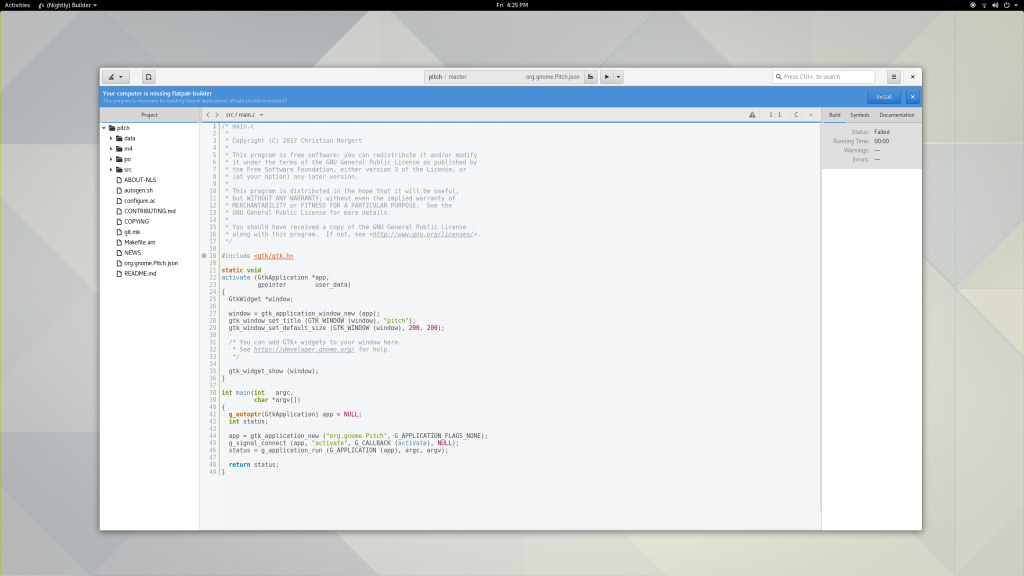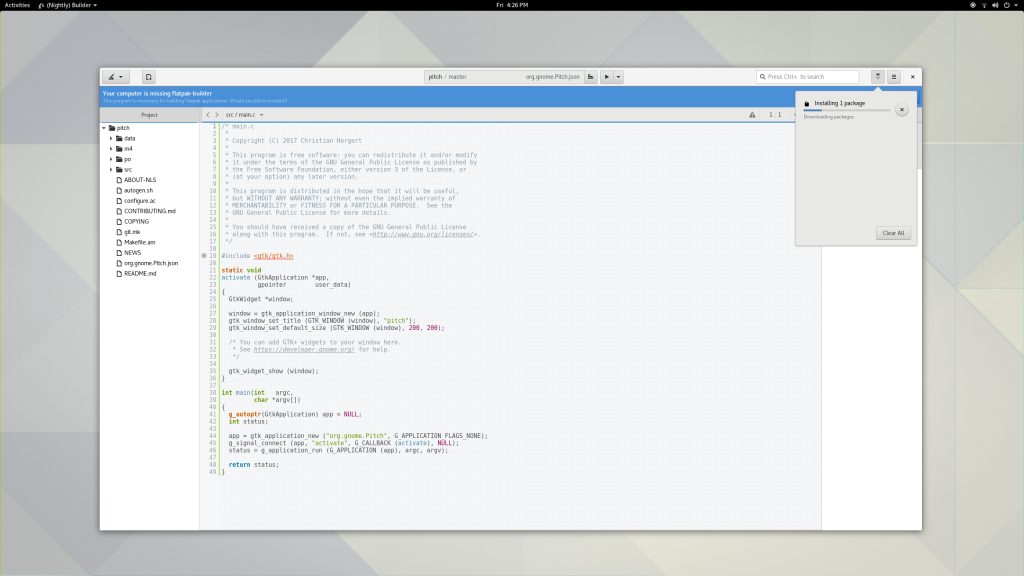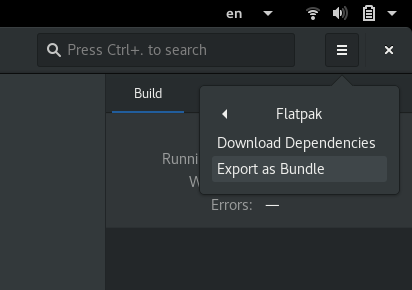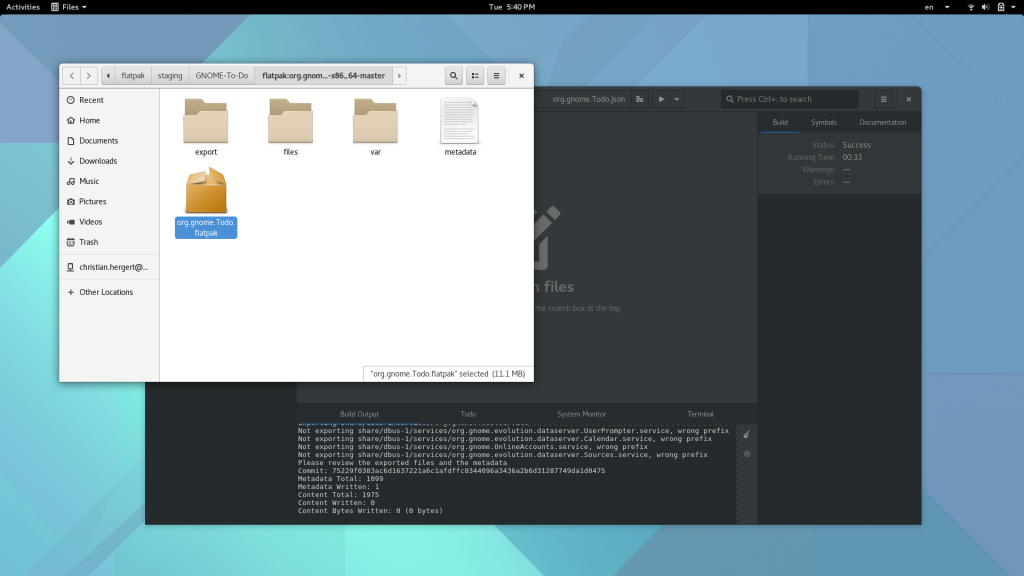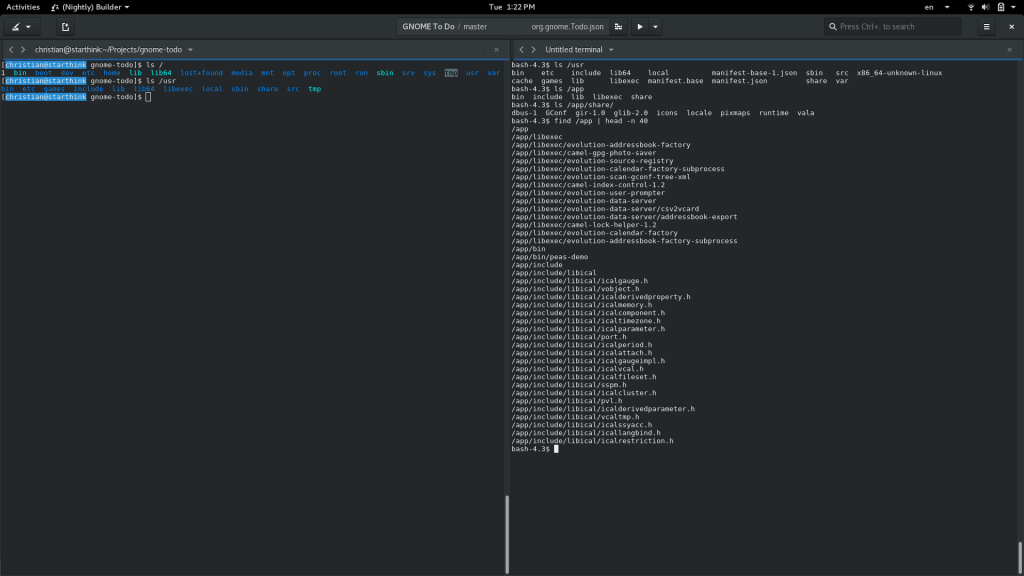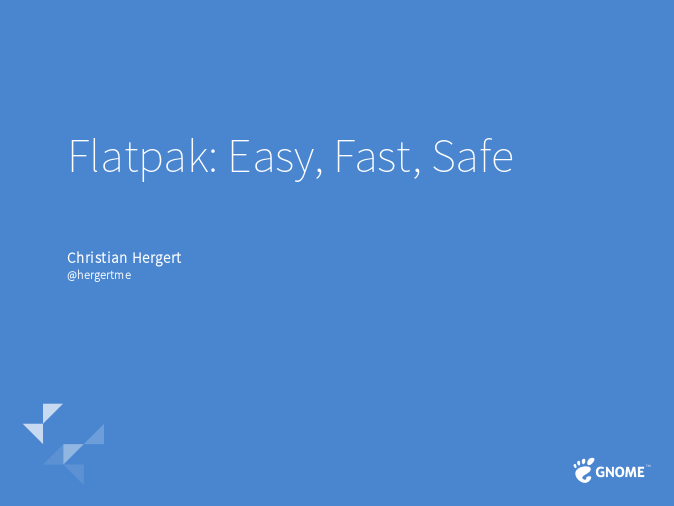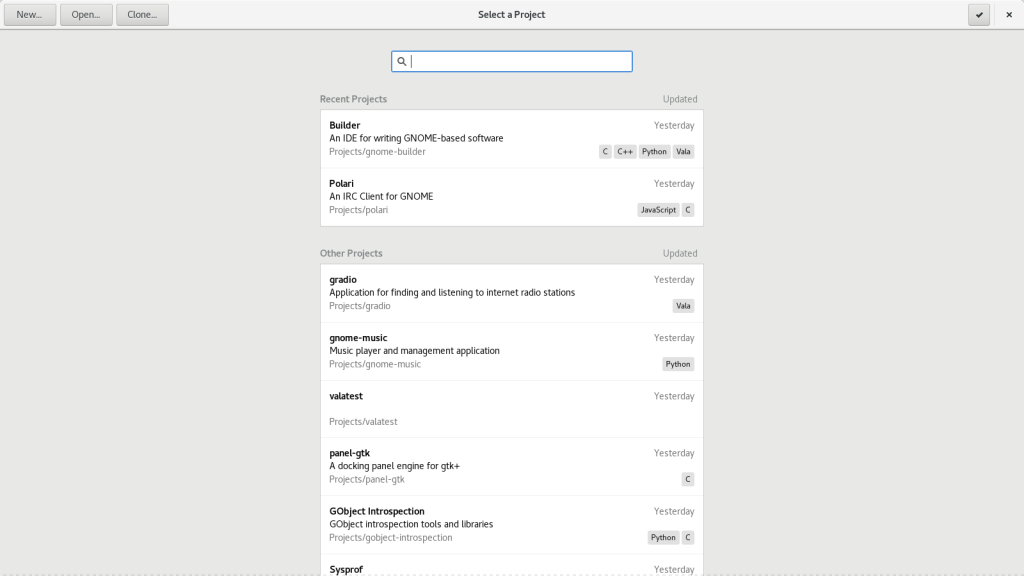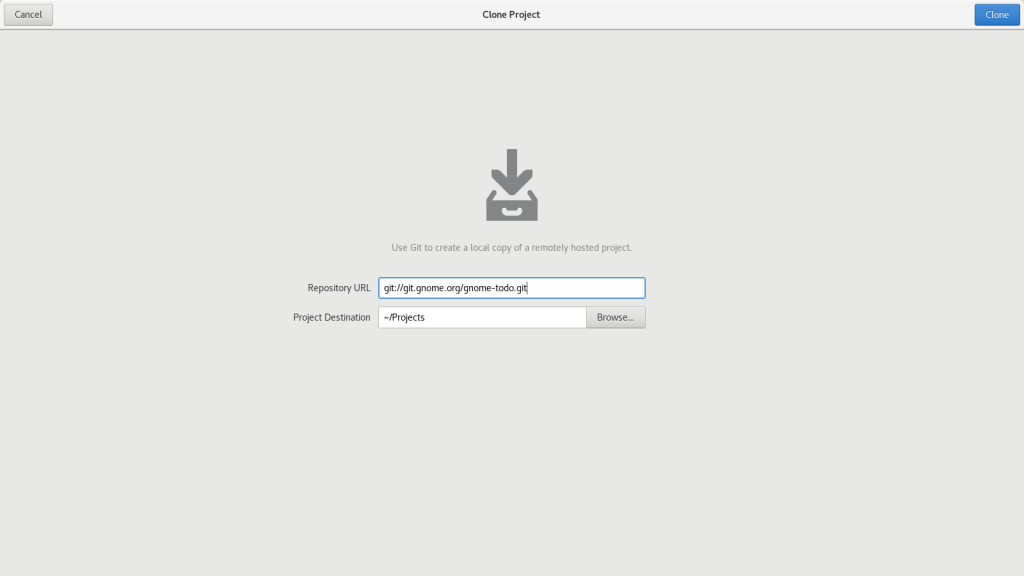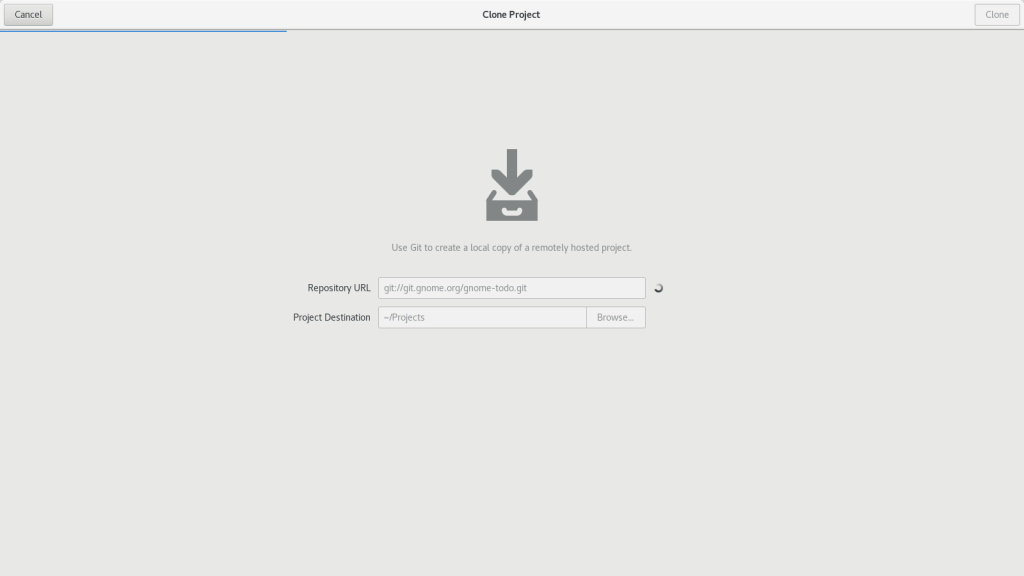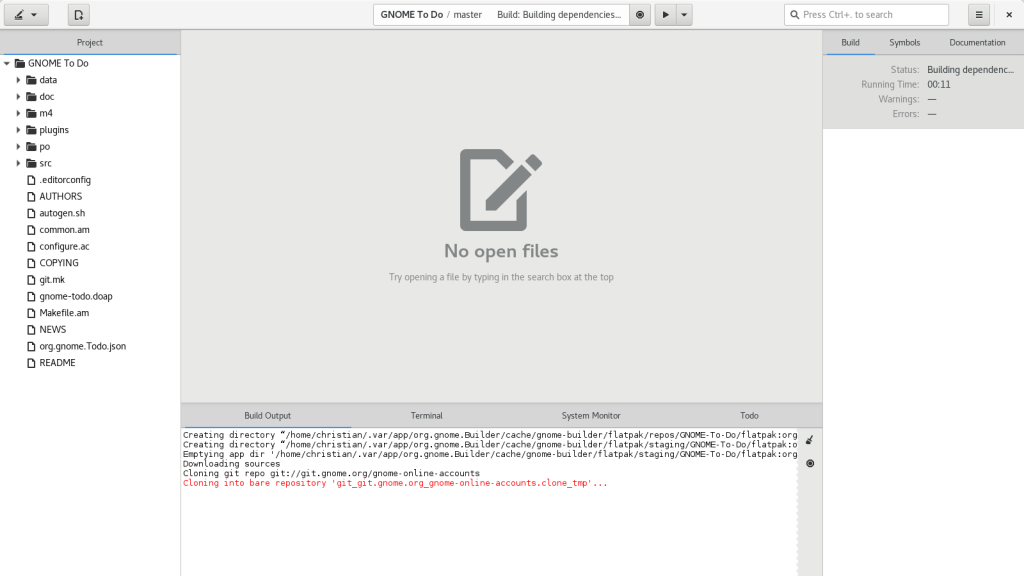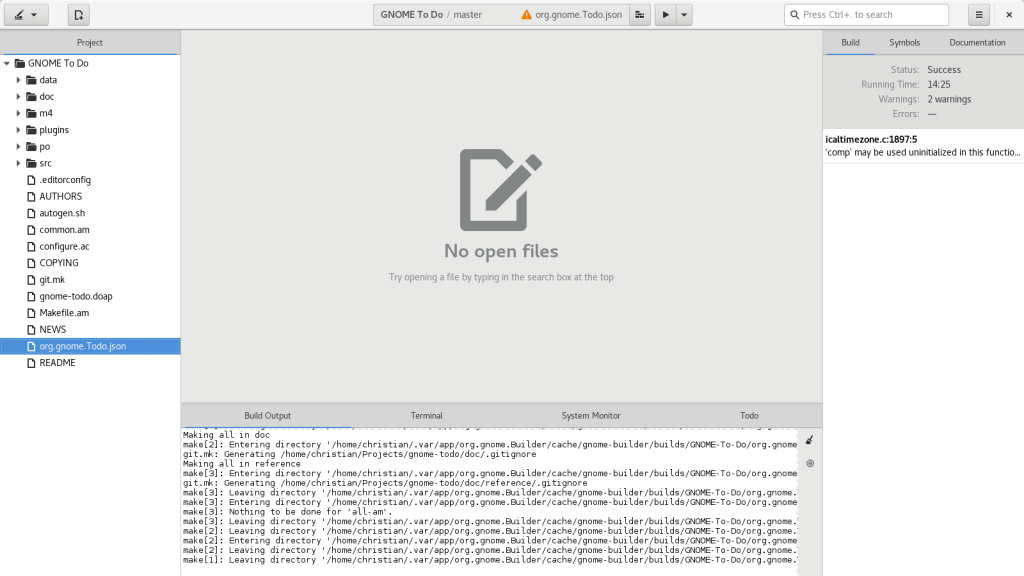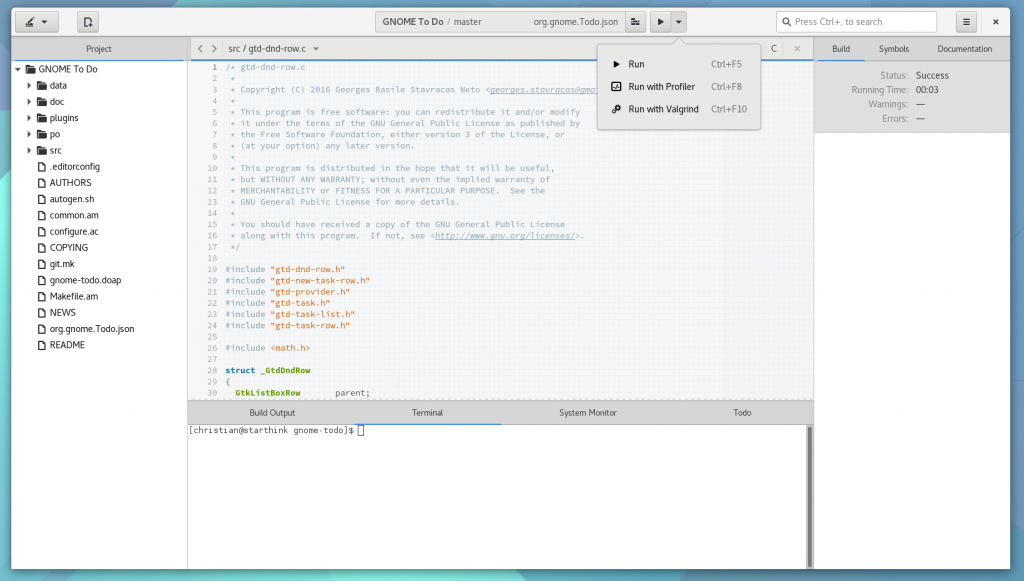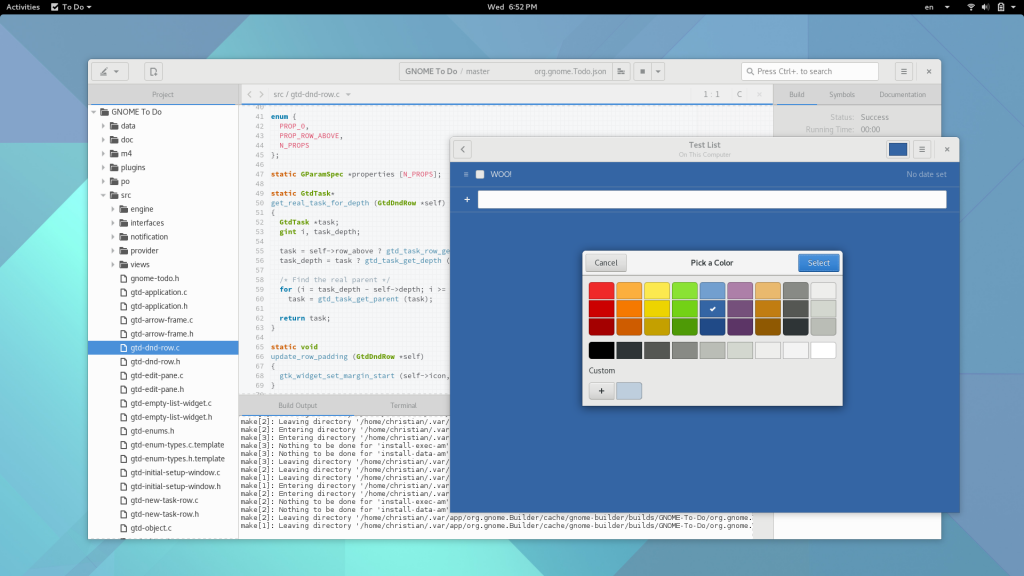Now that 3.24 is almost here, I want to take a little downtime and write some information about pieces of the design underneath Builder. Today, let’s lift the hood and take a look at Runtimes.
In Builder, an IdeRuntime is an abstraction around an environment to run programs. That could be build tooling, SDK management, your application, unit tests, and more. Unsurprisingly, it’s naming is similar to Flatpak runtimes because they have a very 1:1 relationship in the Flatpak plugin. But it’s not an uncommon term by any means.
Today, Builder supports 3 types of runtimes: host, jhbuild, and flatpak.
The host runtime simply executes processes on the host system. This is as close to if you just opened a shell with gnome-terminal as we can give you. We actually go through great pains to do so when the application is distributed via Flatpak. For example, we use the HostCommand² developer-mode interface of Flatpak to execute the subprocess from the host session¹ yet using a PTY master/slave from within the sandbox.
The jhbuild runtime is similar to the host runtime except that we first enter the jhbuild environment using jhbuild run. This ensures that we are using dependencies that you may have built locally. Psuedo terminals are also run this way, so ctrl+alt+shift+t will naturally give you the equivalent of jhbuild shell inside a new embedded terminal.
The flatpak runtime uses flatpak build to enter the runtime environment. Our build pipeline will have had to advance to the point at least the IDE_BUILD_PHASE_PREPARE phase to ensure that the manifest and build directories are setup. So there is just a bit extra complexity involved here. But the result is pretty nice. Your subprocess will see /usr, /app and such just like during the application build process. This makes exploring the build environment very simple. Just open a new terminal with ctrl+alt+shift+t.
Running your application naturally uses runtimes too. This allows us to setup the environment, DBus, network namespaces, Wayland access, and more in the way your application needs. We use information from the build configuration (such as your org.gnome.Foo.json flatpak manifest) to determine what that is.
So what’s next?
I’m relatively happy with this design so far and I think it could work for a few more scenarios. One might be a runtime accessible via adb to your phone. Or possibly a remote container. Or far more interesting to me, inside a GNOME virtual machine providing a simulator with GNOME continuous.
Until next time…
- Obviously this means Builder has a more relaxed sandboxing story than a general purpose application. This comes with the territory of developer tooling of this magnitude.
- If you want to see this feature land in MonoDevelop/Xamarin Studio, go help fix https://github.com/mono/dbus-sharp/issues/57
